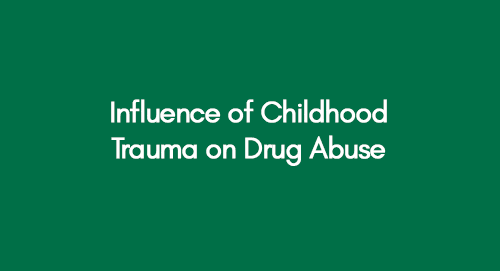
The Influence of Childhood Trauma on Drug Abuse
June 5, 2022
The Importance of Project Leadership in Managing the Risk in Offshore IT Outsourcing : A Study of Service Firms Operating in UK
June 15, 2022Introduction
Exploring monitoring and assessment in math classrooms involves seeing how teachers check what students know. It's like watching how teachers measure progress in math to help students learn better. Effective schooling identifies monitoring student learning as essential in providing high-quality education. Careful monitoring is a major component of student progress; it determines the difference between effective and ineffective schools.
Effective Tips for Swift Student Assignment Help in the UK
Further, this analysis provides different instructional practices to identify student progress as it is one of the efficient predictors of student achievement in any institutional practice (Mor, Ferguson, and Wasson, 2015). Furthermore, according to Ysseldyke and Tardrew (2007), the addition of an instructional management system and progress monitoring in the mathematics classroom measures students’ performance, and the results of this study stated that these two practices if implemented with integrity or high fidelity, the performance in mathematics for all the students is significantly enhanced.
Moreover, assessment is not usually at the end of the course; it is an integral part of constant classroom practice. It focuses on students’ mathematical thinking and attention while taking a mathematical class. Research by Suurtamm (2017) suggested that all assessment methods are the aspects of teaching and learning by making effective instructional decisions.
Monitoring and Assessment in Mathematics in Classroom
Monitoring and assessment in mathematics classrooms involve observing and evaluating students' progress and understanding. These processes help teachers tailor their instruction to meet individual learning needs and promote mathematical proficiency.
1. Diagnostic Assessment
According to Csapó and Molnár (2019), diagnostic assessment is essential in three domains: education, science, and mathematics, as this approach is a 3D approach that distinguishes between the application, psychological and disciplinary learning dimensions. Moreover, another research evaluated that if the diagnostic assessment is implemented efficiently, learning of mathematics and teaching can be enhanced specifically in General Education and Training (Sekao, 2011).
Discover DBA Value Management Assignment
As stated in the study of Quenette (2014), there are multiple assessments that teachers conduct to determine the knowledge of students’ including diagnostic tests. There are ways in which teachers evaluate and interpret the diagnostic information. The research examined a diagnostic testing system in Year 9 mathematics by six teachers, and the diagnostic assessment system was (Specific Mathematics Assessment that Reveals Thinking) SMART system based on two topics: linear graphs and linear equations. Teachers are provided with this assessment with a diagnostic analysis using online diagnostic test teaching advice to meet students' individual learning needs by reducing mathematical ability learning gaps in students.
Furthermore, diagnostic assessment evaluates the existing knowledge of students relevant to the subject, and that’s why it is given at the beginning and at the end to identify the improved learning among students. In addition, diagnostic questions help teachers collect data on students' progress related to their class (Csapó and Molnár, 2019). According to Anselmo and Eaton (2017), this practice is an ‘evidence-informed’ approach in the sense that it impacts decisions about students' pace in understanding insights of the topic.
2. Formative Assessment
Zhou (2017), in his study, said that early education requires a quality monitoring system, and mathematics is the key content for the early assessment and development evaluation of children. Further, he mentioned that formative assessment and evaluation of its results reflect children’s problem-solving ability and promote diversity in the learning methods of children. According to Wanner (2018), in higher education, the central aspects of the processes of student-centred assessment are self and peer assessment. He further mentioned that both assessment types are essential in developing key capabilities among students, such as better understanding and more responsibility towards the subject. Both assessment forms develop critical reflection skills among students by evaluating one's learning skills. Further, he argued that developing this effective tool requires careful design for giving feedback to the developed capabilities.
However, another research by Thomas, Martin, and Pleasants (2011) mentioned that peer assessment is a deeper reflection of an individual’s learning, also called autonomous assessment. It is related partially to self-assessment and partially to other’s performances, such as classmates, when students reflect on their selves. On the other hand, Pachler et al. (2010) stated that the core factor in formative assessment is the learner’s self-regulation, which is directly linked with emotional and motivational factors that affect learners’ engagement in learning. Furthermore, a study has evaluated that formative assessment is effective in assessing mathematics learning abilities for students specifically; this study reviewed that in algebra interventions, instructional effectiveness is critical, and the best measure of instructional effectiveness is provided by a formative assessment, which also promotes professional development (Accardo and Kuder, 2017; Hošpesová, 2018). In addition, Lambert, Algozzine, and McGee (2014) stated that in formative assessment, progress monitoring assesses students’ performance individually in mathematics with the technology named accelerated math (AM) from grades 1-12 (Suurtamm et al., 2016).
3. Summative Assessment
An assessment in which the evaluator identifies what has been learned by an individual or group of students is known as a summative assessment (Hošpesová, 2018). However, Ofsted critically emphasised ‘teaching to the test’ and stated that “it prepares students to gain qualifications but not in equipping them well enough mathematically for their future”. He argued the fact that achieving good grades is not necessarily examined by ‘teaching to the test’. It means that teachers should adopt interesting and engaging approaches to teaching mathematics such that students feel confident in applying their knowledge to practical situations (Marley, 2008). Summative classroom assessments are often performed for formative purposes, as summative results are used to understand students' misconceptions for large-scale instructional purposes (Suurtamm et al., 2016). Furthermore, as stated in the study of Schoenfeld (2015), summative assessments in mathematics are performance opportunities or examinations where the primary purpose is to assess the knowledge gained at the end of the course, such as SATs, stakes assessments, etc. However, another research by Marinho, Leite, and Fernandes (2017) on mathematics summative assessment practices presented that summative assessment emphasized competition and beliefs, which is problematic as it only tells about what a student can do and what he cannot do, nothing about where they should improve themselves.
Bibliography
Accardo, A.L. and Kuder, S.J., 2017. Monitoring student learning in algebra. Mathematics Teaching in the Middle School, 22(6), pp.352-359.
Anselmo, L. and Eaton, S.E., 2017. Making evidence-informed decisions about formative written feedback.
Csapó, B. and Molnár, G., 2019. Online diagnostic assessment in support of personalized teaching and learning: The eDia System. Frontiers in Psychology, 10, p.1522.
Hošpesová, A., 2018. Formative assessment in inquiry-based elementary mathematics. Gabriele Kaiser· Helen Forgasz Mellony Graven· Alain Kuzniak, p.249.
Lambert, R., Algozzine, B. and Mc Gee, J., 2014. Effects of progress monitoring on math performance of at-risk students. Journal of Education, Society and Behavioural Science, pp.527-540.
Marinho, P., Leite, C. and Fernandes, P., 2017. Mathematics summative assessment practices in schools at opposite ends of performance rankings in Portugal. Research in Mathematics Education, 19(2), pp.184-198.
Marley, D., 2008. Ofsted slams teaching to the test. Times Educational Supplement, 28.
Millar, R., 2017. Using assessment materials to stimulate improvements in teaching and learning. In Cognitive and Affective Aspects in Science Education Research (pp. 31-40). Springer, Cham.
Mor, Y., Ferguson, R. and Wasson, B., 2015. Learning design, teacher inquiry into student learning and learning analytics: A call for action. British Journal of Educational Technology, 46(2), pp.221-229.
Pachler, N., Daly, C., Mor, Y. and Mellar, H., 2010. Formative e-assessment: Practitioner cases. Computers & Education, 54(3), pp.715-721.
Quenette, J., 2014. Diagnostic testing and changes to teaching practice in Year 9 mathematics classes.
Schoenfeld, A.H., 2015. Summative and formative assessments in mathematics support the goals of the common core standards. Theory Into Practice, 54(3), pp.183-194.
Sekao, R.D., 2011. Diagnostic mathematics assessment: the impact of the GIST model on learners with learning barriers in mathematics (Doctoral dissertation, North-West University).
Suurtamm, C., 2017. Classroom assessment in mathematics: paying attention to students’ mathematical thinking. The Learning Exchange.
Suurtamm, C., Thompson, D.R., Kim, R.Y., Moreno, L.D., Sayac, N., Schukajlow, S., Silver, E., Ufer, S. and Vos, P., 2016. Assessment in mathematics education: Large-scale assessment and classroom assessment. Springer.
Thomas, G., Martin, D. and Pleasants, K., 2011. Using self-and peer assessment to enhance students' future learning in higher education. Journal of University Teaching and Learning Practice, 8(1), p.5.
Wanner, T. and Palmer, E., 2018. Formative self-and peer assessment for improved student learning: the crucial factors of design, teacher participation and feedback. Assessment & Evaluation in Higher Education, 43(7), pp.1032-1047.
Ysseldyke, J. and Tardrew, S., 2007. Use of a progress monitoring system to enable teachers to differentiate mathematics instruction. Journal of Applied School Psychology, 24(1), pp.1-28.
Zhou, X., 2017. Values Reflected in the Development of the National Mathematics Monitoring Indicator System and Assessment Tool for Young Children.
Get 3+ Free Dissertation Topics within 24 hours?




























